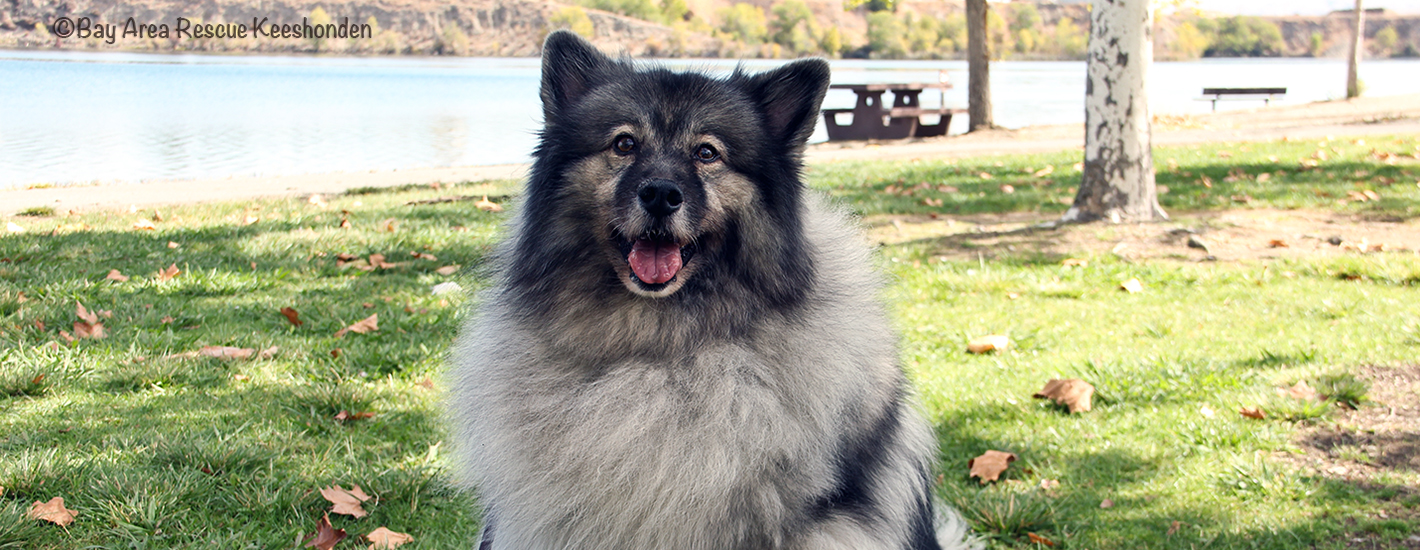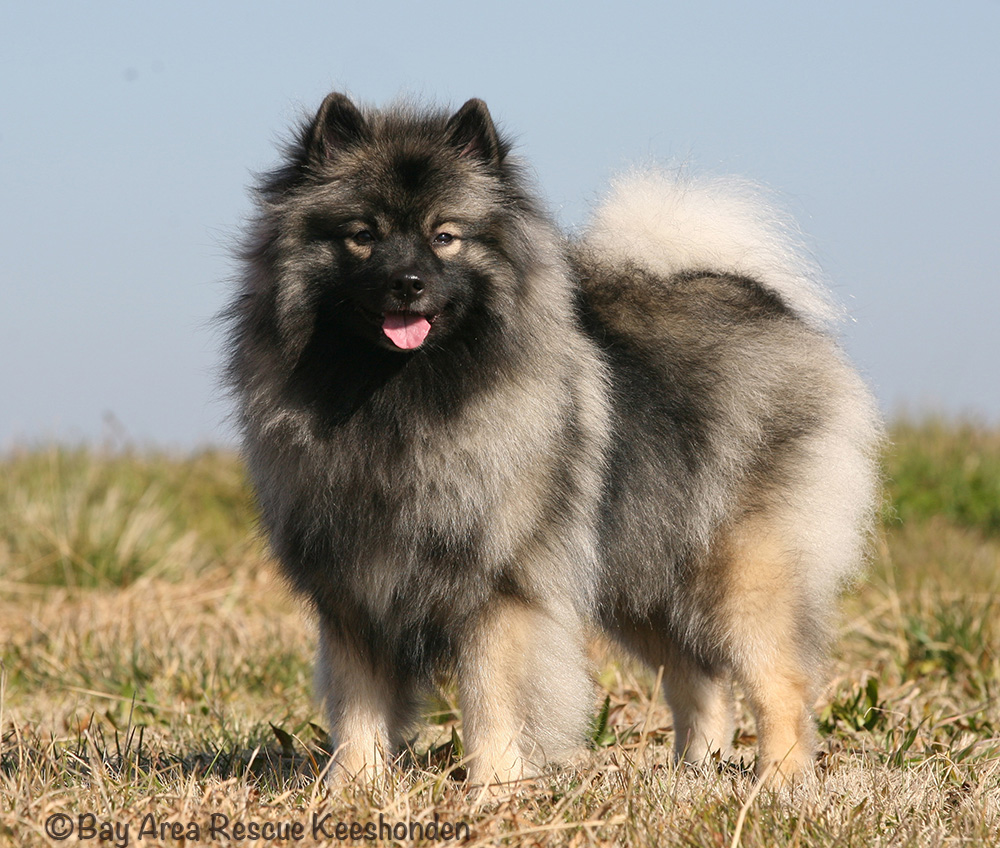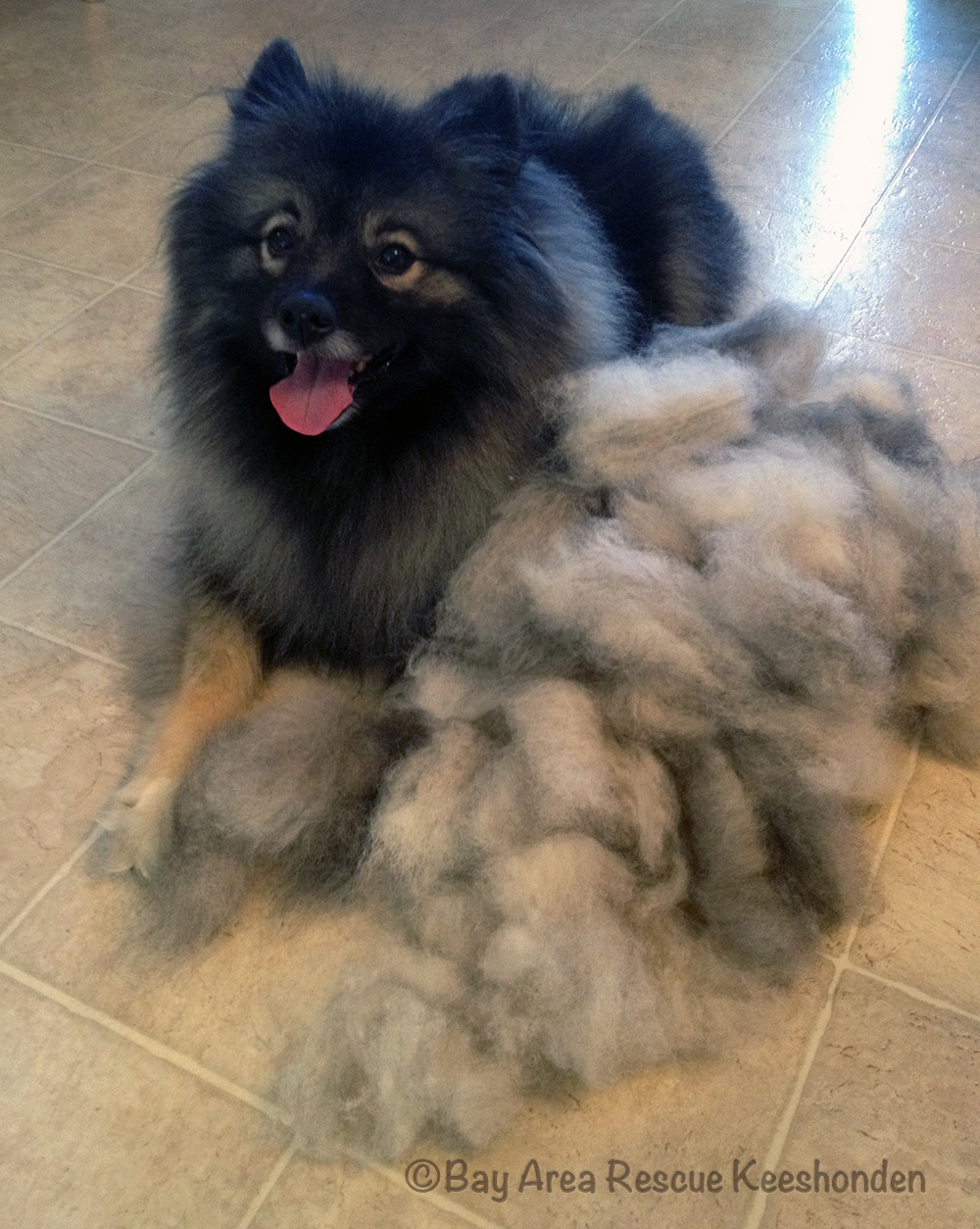
Based on an original article by Bernard Halliwell
The Keeshond has a beautiful and elegant coat. It insulates the dog against cold, hot, and wet weather, seldom develops doggy odor, and captures admiring attention everywhere we go.
When we’re out and about with our Kees, we often hear, “Oh, my, you must brush that dog every day!” People are astonished to hear that we don’t! The Keeshond coat is surprisingly easy to care for.
With some basic tools and a little practice, you can groom your Keeshond yourself! You can keep your dog looking gorgeous and save yourself the expense of a groomer. Caring for your Keeshond’s coat can be a pleasant and satisfying way to spend time with your dog!
Here’s how we do it…
Our list of recommended brushes and other grooming equipment is here.
BRUSHING
We recommend brushing your Keeshond once a week. It typically takes about an hour. Of course you can brush less often – but it will take longer and be more work. A weekly brushing will go more quickly and easily, be more comfortable for the dog, and keep your Keeshond looking splendid!
The basic technique we use is called “line brushing.” We mist the dog lightly with water, part the coat, and then brush along the part. When we’ve brushed the first area, we make another part and brush it, working our way in sections around the dog until we’ve brushed the entire dog.
Most people do this with the dog lying on the side; we brush the first side, then turn the dog over and do the other side. As we work, we mist each section lightly with water, to control static electricity and make the coat easier to handle. Some people add a little conditioner to the water to moisturize the coat and make it feel more luxuriant when they’re done.
A mat-free coat feels and looks wonderful! It’s also important for the dog’s comfort and health. Mats pull on the dog’s skin, provide nesting places for fleas, and prevent air from getting to the skin, which can lead to skin infections and overheating.
The secret to a flowing, mat-free coat is to brush from the skin, the entire length of the hair. Sometimes, people make the mistake of running the brush over the top of the coat without getting to the skin, but that doesn’t work – the coat stays matted. Parting the coat is the key!
Some of us start at the dog’s front and brush the ruff first, then work backwards from the shoulders to the tail. Others prefer to start at the rear and work towards the head. Some people part the dog’s coat along the back from head to tail and work towards the tummy. As long as the entire dog gets brushed, any of these choices is fine.
Brush the coat on the dog’s body towards the head or upwards towards the back. It may seem like the “wrong direction,” but it makes the Keeshond fluffy!
As we brush, we use our hands and eyes to look for problems such as fleas or ticks, lumps, sores, foxtails, etc. Grooming your dog is the perfect opportunity to catch problems early!
What to do about mats
We pay close attention to behind the ears and where the legs meet the body – these areas are infamous for mats.
If we come upon a mat, we pull it apart gently with our fingers, then comb it out or go over the area with a slicker brush. If you’re brushing the dog regularly, there won’t be any mats, or you’ll catch them while they’re small.
If the mat is large, we pull it apart a little at a time, starting from the edges, and/or draw the end tine of a metal comb through it to break it up. Then we go over the area with a comb or slicker brush to get the last little tangles out.
DO NOT cut mats out! They pull on the dog’s skin, so there’s often skin hiding in the mat where you can’t see or feel it. It’s very easy to cut the dog by accident. Many dogs have had to have stitches as a result.
Finishing touches
To find any places we may have missed, we run our hands gently over the dog, feeling for areas where the coat feels lumpy or thicker than it should. We brush those areas out, so the coat feels evenly fluffy all over.
We use a slicker brush to brush the short coat on the legs. A slicker can also be used to gently finish fluffing the entire coat.
TRIMMING THE FEET & HOCKS
The last step is to trim the feet and hocks to create the look of neat, cat-like feet.
First, we trim the fur on the bottoms of the feet even with the pads, using small, blunt scissors. This gives the dog better traction and helps to prevent slipping. This is especially important for senior dogs, who often have difficulty on slippery floors.
Finally, we trim the tops and sides of the feet, and the backs of the hocks, so they’re neat and tidy.
There’s no need to do any trimming on the body. Except for the feet and hocks, the Keeshond coat is supposed to be natural and untrimmed.
Voila! A beautiful, well-groomed Keeshond!

BLOWING COAT
The Keeshond has a plush double coat consisting of a long, full outer coat and a soft, wooly undercoat.
Like other Nordic breeds (such as Samoyeds and huskies), the Keeshond has a different hair growing cycle than single-coated breeds. Most of the time, the Keeshond’s coat is in a resting phase, and isn’t growing. During this time, the dog sheds less than many other breeds, and a weekly brushing will keep hair around the house to a minimum.
Once or twice a year, the Keeshond “blows coat.” It typically takes about 2-3 weeks. The coat sheds profusely (especially the undercoat), and tends to come out in tufts.
While the dog is blowing coat, brushing more often helps to prevent furry “tumbleweeds” in the house and keeps the coat from matting. You’ll find the loose coat comes out easily. It’s important to remove this loose hair quickly – otherwise, it will mat, and removing it becomes difficult and painful for the dog! An undercoat rake can be a very handy tool at this time. Don’t be surprised if you get a grocery bag full of fur!

Yes, all that coat really did come out of that dog! A Keeshond who’s blown coat can look (and feel) skinny and naked, but the fur quickly regrows and the dog becomes fluffy again. Then the coat returns to a resting phase until the next time the dog blows coat.
SHOULD YOU CLIP YOUR KEESHOND’S COAT?
You’ll find our answer here.
BATHING YOUR KEESHOND
WARNING: Close the bedroom door before you give your Keeshond a bath! Wet Kees love to jump on the bed and roll around on the covers! LOL
The Keeshond coat sheds dirt when dry, and sand and debris can be brushed out. The Keeshond’s skin is less oily than many breeds, so they seldom develop doggy odor. Most adult Kees only need to be bathed 3 or 4 times a year, but you can bathe your Keeshond more often if you wish. To avoid drying out the skin and coat, we always use a shampoo made for dogs.
Always brush your Keeshond thoroughly before bathing, or you may find yourself with a snarled mess!
Many people like to use a blow dryer on the dog after bathing. With the dryer in one hand (set on cool) and the pin brush in the other, we proceed with line brushing. You can also let the dog dry naturally, and then line brush to make the coat fluffy and get out any mats that may be caused by bathing.
TRIMMING NAILS
We know many people are afraid to trim their dogs’ nails. If you’re one of them, you can have it done by your vet or perhaps at your local pet wash. Remember, though, that going to the vet is scary for most dogs. Trimming the dog’s nails at home can be less stressful for the dog, and you can do it more often, so you can keep the nails from growing too long. It’s easier than you may think.
We like to take off a tiny bit at a time with nail clippers, and then finish the edges with a Dremel. This way, we’re less likely to get the nail too short. Until the dog is used to it, we do one or two nails at a time, followed by something fun like a treat or playtime, to make nail trims a good experience.
Here’s an excellent video on how to trim nails in an easy, non-stressful way.